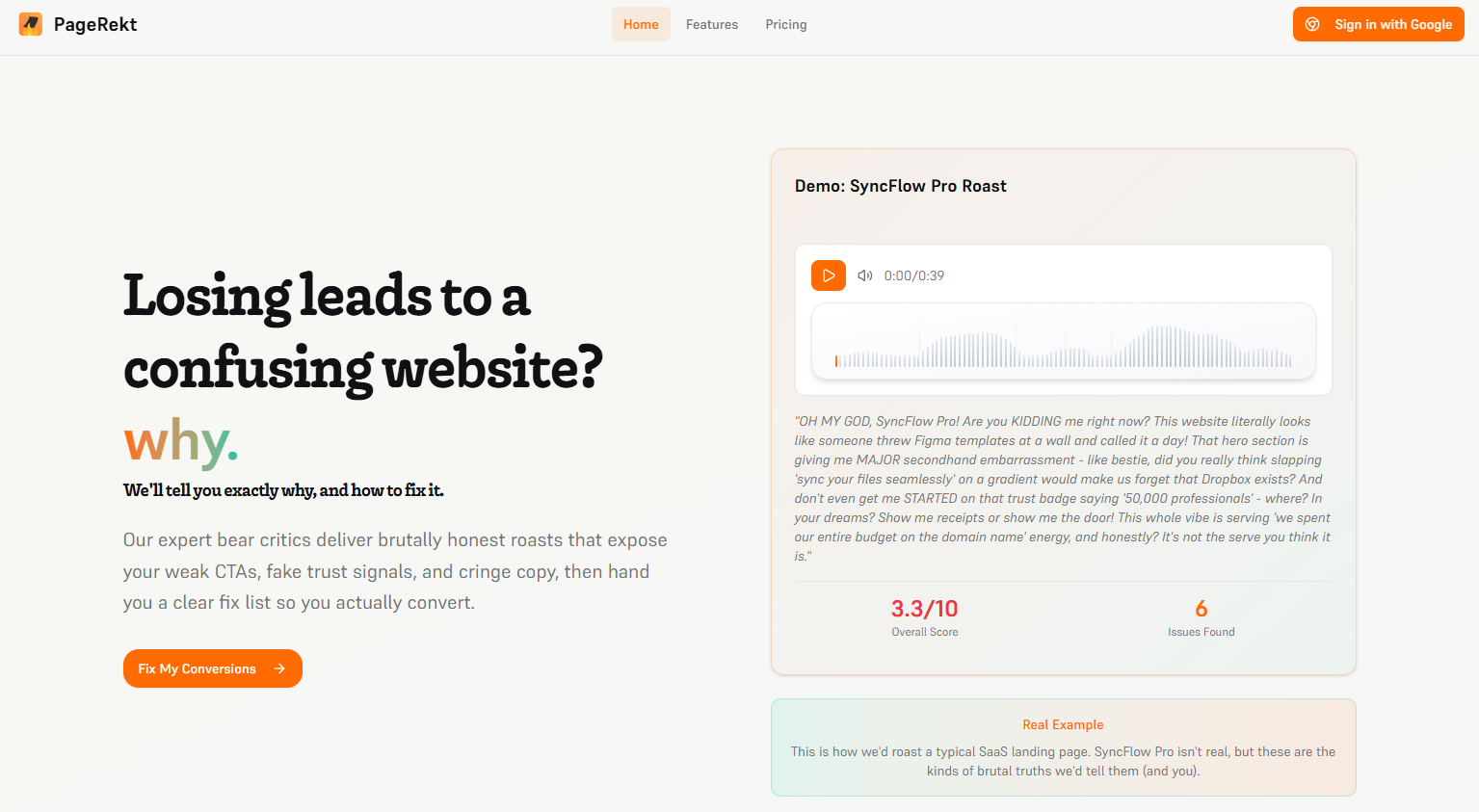
Understanding PageRekt: The Basics of PageRank Explained

Key Highlights
Here's a quick look at what we'll cover in this guide to the PageRank algorithm:PageRank is a foundational algorithm used by the Google search engine to measure the importance of web pages. While Google search engine no longer publicly shares the exact PageRank scores of individual web pages, you can estimate a page's authority using third-party tools and metrics designed to mimic the PageRank algorithm, or analyze factors such as backlinks and site popularity within search engine results. To check the current PageRank of your website, you can use online tools that approximate PageRank calculations or review authority scores from platforms like Moz, Ahrefs, or SEMrush, as they provide insights based on the same principles.
- PageRank is a foundational algorithm used by the Google search engine to measure the importance of web pages.
- It works by counting the number and quality of links to a page, treating each link as a "vote."
- Key concepts include the damping factor, which models the probability of a user continuing to click links.
- The "random walk" principle simulates a user randomly navigating from page to page.
- While Google no longer publicizes PageRank scores, the principles behind it remain influential in SEO.
Introduction
If you have ever worked with search engine optimization (SEO), you’ve likely heard the term PageRank. Developed for the Google search engine, this algorithm was a game-changer in how search engine results were organized. It provided a way to determine a page's importance based on the links pointing to it. While its direct influence has evolved, understanding the core concepts of PageRank is still fundamental for anyone looking to improve their website's visibility and performance in search.
What Is the PageRank Algorithm?
The PageRank algorithm is a system used by search engines to rank relevant pages and websites in their results. At its core, PageRank is a method of measuring the importance of website pages by analyzing the links between them. It operates on the idea that more significant pages are likely to receive more links from other reputable websites.
Essentially, the algorithm assigns a numerical weighting to each web page to determine its relative importance. This helps the search engine deliver more relevant and authoritative results to users. Let's explore the history, principles, and key terms behind this influential algorithm.
Origin and Early Development of PageRank
The story of PageRank, the first algorithm developed by Larry Page and Sergey Brin, begins at Stanford University in the late 1990s. It was developed by Larry Page and Sergey Brin, who would later become the founders of Google. At the time, existing search engines primarily ranked results based on how many times a search term appeared on a page. This method was simple but often led to irrelevant or low-quality results.
Page and Brin proposed a different approach. Their idea was to treat the web as a massive graph, where pages are nodes and hyperlinks are the connections. They theorized that a link from one page to another could be seen as a vote of confidence. This represented a significant shift in how a search engine could assess the value of a web page.
This innovative concept, cleverly named "PageRank" after both web pages and Larry Page himself, became the foundation of their new search engine. It wasn't the only algorithm they used, but it was the first and most famous page rank algorithm, revolutionizing how we find information online.
Core Principles Behind PageRank Ranking
The PageRank theory is built on a simple yet powerful idea. The underlying assumption is that more important websites are more likely to receive links from other websites. In this system, not all links are created equal. A link from a highly-ranked, authoritative page carries more weight than a link from a lesser-known page.
The PageRank algorithm outputs a probability distribution. This represents the likelihood that a person randomly clicking on links will land on collections of documents of any size or any particular page. Imagine someone browsing the web by following one link after another. The pages they are most likely to visit are considered the most important.
This process allows the algorithm to assign a numerical value to every page, reflecting its importance within the web's structure. The computation requires multiple passes, or "iterations," to fine-tune these values until they closely reflect the theoretical true importance of each page.
KeyTerms Associated With PageRank
To fully grasp how PageRank works, it helps to understand a few key terms. These concepts are central to the calculation and logic of the algorithm. They help explain how a page's score is determined and adjusted.
Have you heard of these terms before? They are crucial for understanding the mechanics of the PageRank score and the importance of a given page.
Here are some of the most common terms associated with PageRank:
- Backlinks: These are incoming links from other websites. They are the "votes" that PageRank counts to determine a page's value.
- Damping Factor: This is a value, typically set to 0.85, that represents the probability that a user will continue clicking links on a page. It accounts for the chance that a user might get bored and jump to a random new page.
- Random Walk / Random Surfer: This is the theoretical model of a user who navigates the web by clicking on links at random. The PageRank score estimates where this "random surfer" is most likely to end up.
- PageRank Score: This is the final numerical value assigned to a page, indicating its relative importance.
How Does PageRank Work Mathematically?
Mathematically, the PageRank algorithm views the web as a directed graph, where pages are nodes and links are edges. The PageRank value of a page is calculated based on the number of incoming relationships from the PageRank of the pages that link to it. The sum of PageRank across all pages is a fixed number, and this value is distributed among pages through links.
The pagerank computations are iterative. They use a transition matrix to determine how PageRank flows from one page to another. Let's dig into the specifics of how backlinks, the damping factor, and the calculation process come together.
The Role of Backlinks in Determining Page Importance
Backlinks, or incoming links, are the cornerstone of the PageRank algorithm. Think of each link, including internal links, to your page as a vote for its importance. The more votes a page receives, the more important the algorithm considers it to be. However, it’s not just about the quantity of links.
The quality of links is just as crucial. A backlink from a well-established, high-authority site like a major news outlet or educational institution contributes much more to your PageRank than a link from a small, unknown blog. This is because the importance of each node (or page) is passed on through its outbound links.
Therefore, a page's PageRank is the sum of the PageRank values passed to it from all the pages that link to it, which can depend on the number of links each source has. If a page with a high PageRank links to you, it passes on a significant portion of its 'link equity,' boosting your page's authority in the eyes of the search engine. This system ensures that rankings are based on trust and authority, not just link volume.
Explaining the Damping Factor and Random Surfer Model
The PageRank algorithm uses a concept called the "random surfer" model, similar to the original PageRank algorithm, to simulate how a user might navigate the web. This model imagines a user who starts on a random page and keeps clicking on links. However, this surfer won't follow links forever. At some point, they might get bored and jump to a completely different page.
This is where the damping factor comes in. It's a probability value, usually set around 0.85, that adds a dose of reality to the model. The damping factor ensures that the calculation doesn't get stuck in loops and that every page has a chance of receiving some PageRank.
Here’s how it works:
- The damping factor represents the probability that the random surfer will follow an outbound link on the current page.
- The remaining probability (1 minus the damping factor) is the chance that the surfer will abandon the current path and jump to a new, random page.
- This mechanism prevents pages with no outbound links (known as "dangling links") from hoarding PageRank.
- It helps the web search engine distribute PageRank more evenly across the entire collection of documents.
PageRank’s Influence on Search Engine Results
The introduction of PageRank fundamentally changed search engine results. By measuring the importance of a set of web pages, it allowed Google to prioritize high-quality, authoritative content in its search rankings. Previously, rankings were often manipulated by stuffing keywords onto a page, but PageRank introduced a more reliable metric based on peer-review via links.
This shift meant that pages with higher PageRank scores were more likely to appear at the top of search results. Let's look closer at how this has impacted SEO and how PageRank compares to other link analysis algorithms.
How PageRank Impacts Google SERPs and SEO
In the early days of Google search, PageRank was a dominant factor in determining search results rankings. Websites with high PageRank links pointing to them saw their pages climb to the top of the results. This direct correlation made acquiring backlinks a central part of search engine optimization (SEO).
As webmasters learned to manipulate this system through tactics like link farms, Google evolved its algorithm. While PageRank is no longer the sole determining factor it once was, its principles are still very much alive. High-quality backlinks remain a powerful signal of a page’s authority and relevance. Today, Google uses hundreds of signals to rank pages, but the idea of link equity is still a core component.
Is PageRank still important for SEO? Yes, but indirectly. Focusing on earning high-quality links from relevant, authoritative sites is still a critical SEO strategy. This approach naturally aligns with the original principles of PageRank and helps improve your site's standing in Google's eyes, even if the public PageRank score is a thing of the past.
Comparing PageRank With Other Link Analysis Algorithms
The PageRank algorithm was revolutionary, but it's not the only link analysis algorithm out there. Over the years, other methods have been developed to analyze the link structure of the web and determine the importance of a document or page. While they share the goal of ranking content, they often differ in their approach.
PageRank's primary innovation was its global ranking system based on the web's entire link structure. In the original form of PageRank, other link analysis algorithms might focus on different aspects, such as the topical relevance of links or the proximity of linked pages within a site's structure.
Here are a few ways the PageRank algorithm stands apart from or relates to other link analysis algorithms:
- Global Authority: PageRank assigns a universal authority score to a page, regardless of the search query.
- Link-Based Voting: Its core mechanic is purely based on the number and quality of backlinks.
- Query-Independent: Unlike algorithms like HITS (Hyperlink-Induced Topic Search), the basic PageRank score is not dependent on a specific search term.
- Foundation for Others: Many modern algorithms and SEO metrics are inspired by or built upon the foundational concepts of PageRank.
Implementing and Measuring PageRank Today
While Google no longer provides a public PageRank score, the algorithm itself is not a secret. It's possible to calculate a PageRank-like score for any set of linked documents. For those interested in network analysis, you can even implement the algorithm yourself to understand the authority of nodes within a given graph.
There are tools and libraries that make this process accessible. For example, a NetworkX PageRank implementation in Python can compute these values in real time for a current page or an entire network. Let's explore how you can check for similar metrics and even build your own implementation.
Checking the Current PageRank of Your Website
In the past, checking your PageRank was simple. Google provided a PageRank score from 0 to 10 for any webpage, which was visible through the Google Toolbar. This allowed site owners to directly see how Google valued their pages. However, Google officially discontinued this public score in 2016.
So, how can you check the current PageRank of your website? The short answer is that you can't check the official Google PageRank score anymore. The company now keeps these pagerank results internal as part of its complex ranking system.
However, you can use third-party SEO tools to get a similar metric. Companies like Ahrefs (URL Rating/Domain Rating), Semrush, and Moz (Page Authority/Domain Authority) have developed their own algorithms that analyze a site's backlink profile to estimate its authority. While these are not the official PageRank, they serve as excellent proxies for understanding your site's link equity and comparing it to competitors.
Can You Implement PageRank Using Python or Graph Databases?
Yes, you can absolutely implement the PageRank algorithm using Python. It's a popular project in data science and network analysis. Python libraries like NetworkX are specifically designed for working with complex networks and provide built-in functions for PageRank calculations, making the process surprisingly straightforward.
A NetworkX PageRank implementation allows you to input a given graph and returns the PageRank value for each node. You can define parameters like the damping factor (alpha) and the maximum number of iterations to customize the calculation.
For larger-scale applications, graph databases are also an excellent tool. Many modern graph databases include PageRank as a standard graph algorithm. These tools are optimized for analyzing relationships and can calculate PageRank efficiently across massive datasets.
- Python Libraries: NetworkX is the most common choice for implementing PageRank.
- Graph Databases: Neo4j, TigerGraph, and Amazon Neptune are examples of graph databases that have built-in PageRank functions.
- Customization: These tools allow you to specify parameters to tailor the algorithm to your needs.
- Use Cases: Beyond web pages, PageRank can be used to analyze social networks, citation networks, and more.
KeywordSearch: SuperCharge Your Ad Audiences with AI
KeywordSearch has an AI Audience builder that helps you create the best ad audiences for YouTube & Google ads in seconds. In a just a few clicks, our AI algorithm analyzes your business, audience data, uncovers hidden patterns, and identifies the most relevant and high-performing audiences for your Google & YouTube Ad campaigns.
You can also use KeywordSearch to Discover the Best Keywords to rank your YouTube Videos, Websites with SEO & Even Discover Keywords for Google & YouTube Ads.
If you’re looking to SuperCharge Your Ad Audiences with AI - Sign up for KeywordSearch.com for a 5 Day Free Trial Today!
Conclusion
In summary, understanding PageRank is crucial for anyone looking to enhance their website's visibility and performance in search engine results. By grasping the fundamentals of how PageRank operates—from its mathematical intricacies to its impact on SEO—you can make more informed decisions about your link-building strategies and overall content development. Remember, backlinks play a significant role in determining your page's authority, so fostering quality connections is essential. As you explore the various methods to calculate and implement PageRank, you'll find that staying updated with the latest developments is key to maintaining your competitive edge. If you're ready to take your SEO efforts to the next level, feel free to reach out for further assistance!
Frequently Asked Questions
Is PageRank Still Important for SEO in 2024?
Yes, the principles of PageRank are still important for search engine optimization. While it's just one of hundreds of factors the Google search engine uses, high-quality backlinks remain a critical signal for authority. Strong link equity, a concept derived from PageRank, continues to positively influence search engine rankings in Google search.
Where Can I Find the Original PageRank Research Paper?
The original research paper that describes the PageRank algorithm is titled "The Anatomy of a Large-Scale Hypertextual Web Search Engine." It was written by Sergey Brin and Larry Page at Stanford University in 1998, outlining the prototype for what would become the Google search engine. You can find it on Stanford's website. [Source: http://infolab.stanford.edu/~backrub/google.html]
What Are Some Modern Variations of the PageRank Algorithm?
Modern variations of PageRank are far more complex. Later versions of PageRank adjusted the original formula to use a probability distribution between 0 and 1, which reflects the total number of pages involved. Google's current algorithms also incorporate machine learning and consider factors like user behavior, content relevance, and the topical context of links, not just the link graph itself.
